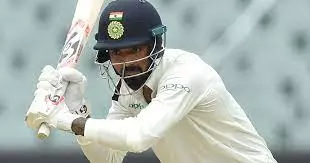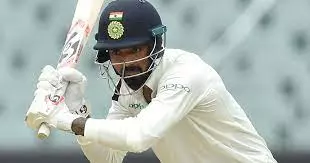When you come out to bat after yet another rain interval and James Anderson, Dukes ball in hand, is glaring down at you from the top of his mark, it may be tough for a batsman to think straight. It’s cloudy and breezy. Every time you’ve stepped back to the dressing room, hiding your bat under your sweater, there are coworkers sipping hot beverages who don’t have to wait for the umpires’ next summon. You, on the other hand, must refocus, keeping an eye on the seam position and the shiny side, recalling your intentions, reacting, and hoping.
There’s an added difficulty if you’re KL Rahul at Trent Bridge. After a lot of fiddling with your technique, you were kicked out of the Test team. Two years later, you’ve returned under unusual circumstances, and the squad is counting on you to step right back up to the opening position and bail out your team in the first game of a five-game series.
A batsman can be excused for a lapse in focus on days like these. Rahul’s concentration slipped on several occasions as he set about reminding the world of his class in the format with a 214-ball vigil for 84 in which just two other batsmen managed to pass 50. On Day 2, he shoved at an Anderson delivery well beyond his body and was reprieved at second slip during the 18-minute mayhem. In a phase of play that whipped out the cream of India’s middle-order, you needed luck to escape on this pitch.
It was a mental blunder, similar to one he’d make on Day 3, but it was caused as much by being a champion bowler as by the mental strain of being out there and concentrating so hard. It’s no surprise that Rahul spun around and ran into the dressing room when the first rain break was called. There are no courtesy waits for his spouse, in this case Rishabh Pant.
However, the second day came to a close with a telling statistic. In a little more than a complete session of batting, Rahul had left alone 31% of deliveries, or 100 balls. It’s telling because strokemakers, especially those returning to Test cricket after a healthy diet of white-ball forms, often get antsy when they don’t feel the ball on their bat for long periods of time. There’s also the technical aspect: the backfoot must go towards the off-stump in order to determine which ones can be abandoned. Then you set up in such a way that the LBW from the inswinger/nip-backer is covered. These were, incidentally, two flaws in Rahul’s Test match game that forced him out two years ago.
In Rahul’s mind, the England series of 2018 had opened a can of worms concerning what to play and what to leave. He also had a bad reputation that he was trying to overcome. It was most likely borne after the 2016 IPL, when he had established himself as a very good T20 batter with Royal Challengers Bangalore. It may have had such an effect on his long-form game that by the time he arrived in the West Indies the following year, he was out to a half-shot. In Jamaica, against Jason Holder,He’d committed to playing at a ball outside off-stump before, as an afterthought, attempting to move his bat away. His bat selection had also changed dramatically as his need for form intensified. The bat was pointed squarely above the stumps and coming down from hip-height in his stance. His back and across trigger couldn’t get him close to the ball’s line.
Given his time with the Indian side in other formats, Rahul has only played two First Class games since being dropped. The second time was at Durham a fortnight ago, when he stepped in as a middle-order keeper-bat for Rishabh Pant, who was isolating, and struck a crucial century. The first was a Ranji Trophy semifinal against Bengal in early 2020, on a difficult Eden Gardens track, where he reset his long-form batting. He only got 26 runs and was out to a great catch in the deep, but he showed a new sense of serenity in choosing his swings and situations across 67 balls.
So, back in Nottingham, Rahul’s bat was aiming at slip once more, closer to the position that had brought him all of his early Ranji Trophy and Test cricket glory. The rearward movement in his trigger was also less evident, allowing him to be early on the ball, as Dinesh Karthik pointed out on the Sky Sports broadcast. So, while Rahul bowled effectively and played close to his body when England overcompensated by bowling full, he pushed forward swiftly to drive down the ground or square off the wicket on the off-side when England overcompensated by bowling full.
“I felt like I could play two or three different three shots even in red-ball cricket,” Rahul said at the end of the day’s play. “That was something I realised I had to learn to control sometimes when the going gets tough or the wickets are challenging, or playing against good bowlers when the ball is swinging, you need to hold back,” Rahul said.

